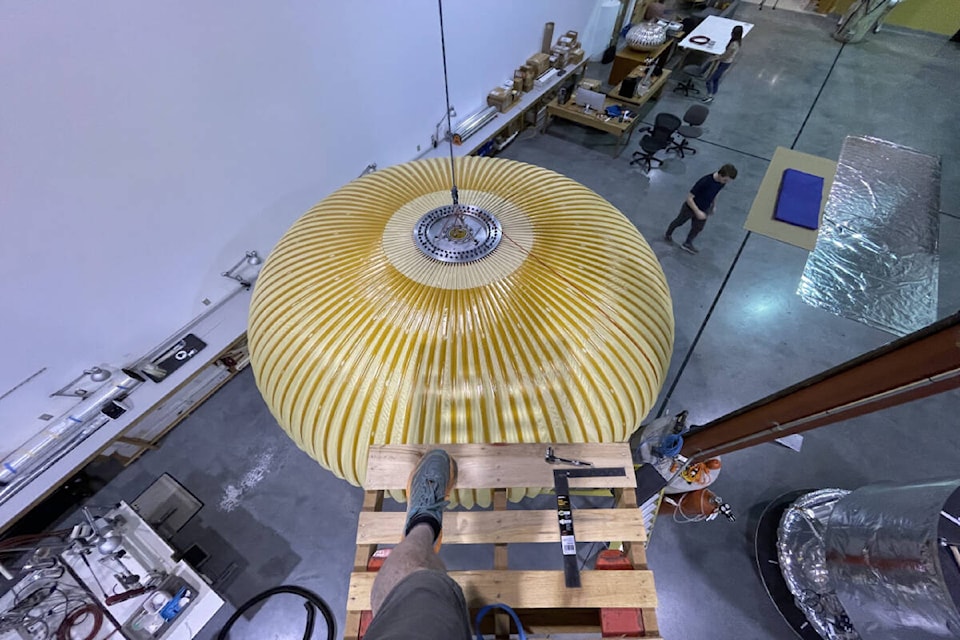A Chilliwack aerospace engineer is hoping to get his company’s latest creation – an expandable space habitat – as far as Mars, perhaps with the help of Elon Musk’s SpaceX.
At a news conference at the 39th Space Symposium in Colorado Springs on Tuesday (April 9), Maxim De Jong’s new Max Space company introduced a new unique, expandable space-habitat architecture to the world.
The engineers at Max Space said they have successfully shown that their expandable technology can be scaled upwards in size indefinitely — potentially as large as a stadium — while maintaining structural predictability. Their advancements make the company one-of-a-kind in the space habitation market by opening the door to large-scale production and vastly reduced flight qualification cost, the company announced.
The new invention is backed by 25 years of innovation in the world of expandable space technology, they said. The habitat is designed to be the lightest type of expandable space habitat, which would offer significant cost savings to the industry.
De Jong has an extensive background in aerospace engineering dating back to 1985. He most recently served as a project manager and research engineer at his Chilliwack-based company, Thin Red Line Aerospace. His participation in dozens of NASA programs has focused on space habitation, planetary entry descent and landing, and spacecraft shielding.
RELATED: Setting the record for adventure
“Almost 20 years ago I designed and built the first two inflatable spacecraft pressure hulls, and they are still orbiting Earth to this day,” de Jong said in a statement Tuesday.
“Despite their success, we realized we couldn’t efficiently scale-up to the bigger sizes that we really needed in space. So, after both Genesis craft flew, I took an entirely different design path to ultimately develop an expandable architecture that is fundamentally predictable and infinitely scalable.”
The first Max Space habitat is set to fly with SpaceX in 2026, with Musk’s Starship and New Glenn. The goal is to have a family of scalable habitats in space by 2030.
Max Space will have its its manufacturing headquarters in Chilliwack with the corporate headquarters based out of Jacksonville, Florida.
